Jia Yi Jing
I am sure you knew that “Pulse diagnosis is a certain indication of preclinical disease. A little consideration will show that before a disease develops with physical signs and objective findings, there will be, for months or years beforehand, some physiological disturbance that is too slight to cause overt symptoms. But even at this stage, the pulse registers a definite abnormality. A practitioner skilled in its practice would-without ever speaking to or seeing the face or body of his patient and with no more contact than a hand to radial artery of the wrist-would be able to arrive at a reliable diagnosis in a matter of minutes. It can be used to confirm a diagnosis already arrived at by clinical and laboratory methods. It can be of very great benefit in a case where, although the patient is obviously ill, it has not been possible to arrive at a conclusive diagnosis in spite of thorough clinical and laboratory investigations. It is so sensitive method of diagnosis that not infrequently it will register past illnesses so accurately that a doctor is in a position to recount past history of his patient's health and to warn him of illness to be expected in future, whether it be in several months or in several years time.” F. Mann
Do you want to know
-how to relieve any pain instantly, using pulse diagnosis in trigrams balancing method?
-how to relieve any condition instantly with pulse and trigrams balancing method?
-how to use a more efficient diagnostic technique such as pulse diagnostic in your practice?
-how to correctly record your patient’s pulse using advanced Pulse Map™?
-how to analyse every change of a patient’s pulse for each visit using advanced Pulse Map™ ?
-which meridians are excessive and which are deficient with direct pulse diagnostic and advanced Pulse Map(R)?
-which meridian/organ is sick in a particular moment with pulse diagnostic and dvanced Pulse Map™?
-which particular points of particular meridian are open to use in the particular moment with pulse diagnostic and advanced Pulse Map™?
-how to rely on your own pulse diagnostic more than another doctor’s diagnosis?
-how differentiate which meridian/organ has more yin or more yang Qi in a particular moment with pulse diagnostic?
-if there one or few meridians/organs are involved in pathological process with pulse diagnostic?
-which organ you need to disperse and which you need to replete according to your pulse diagnostic?
-how to be aware about any hidden processes patient doesn’t know according to pulse diagnostic?
-which disease you need to prevent according to your pulse diagnosis?
-which particular extraordinary meridians are open for treatment in particular moment according to pulse diagnostic?
-how to stop using a cook book’s prescriptions for acupuncture treatment and have ability to listen the pulse language?
So you may consider coming for hands-on seminar-workshop based on the Huangdi Bashiyi Nanjing (黃帝八十一難經) classic of difficult issues, known as Nanjing.
This book was reviewed by many physicians during last 2000 years; some parts were changed according to the contemporary views on medicine of that time, making it very difficult to comprehend now. Some doctors as Li Shizhen adopted pulse diagnostic methods from this book explaining meaning of different pulses in different words. Most of practitioners now use Li Shizens’ pulse interpretation which is accepted for herbal medicine, but can’t be used widely in acupuncture.
Original Huangdi Bashiyi Nanjing (黃帝八十一難經) gives clear picture on patient’s condition from acupuncture point of view regardless his/her complaints. Treating this particular condition we improve symptoms we know and some that patient even didn’t mention, preventing development of disease or any other conditions.
You will be able to go through as many as thirty difficulties of this famous acupuncture classic on practice.
During a 10-hour course you will be able to become familiar with pulse diagnostic methods used in acupuncture for your everyday practical use.
You will be able to start to improve dramatically your treatment results and better understand Classics of Chinese medicine.
You will be able to check if your pulse diagnostic results are correct.
For video explanation of Acupuncture pulse diagnosis and Pulse Map™ method please visit page of Preventative Acupuncture of this site
Two days Seminar-Workshop will have place at noon of 24 September and 01 October 2011 at
Aspley Wellness Centre
Shop C 589 Robinson Rd west
Cnr Mapellen St
Aspley QLD
Ph 0424346840
[email protected]
There are very limited places available for this hands on seminar, so please book in advance.
Cost Au$350
Students Au$300
Please click Read More if you like to know more about Pulse Map™ and seminar------>
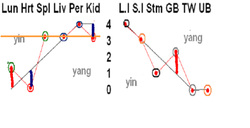
It shows following results
1.Tae Yin is yin deplete
Jue Yin has same yin as yang, balanced
Shao Yin is yin deplete
Tae Yang is partially yang deplete
Yang Ming has same yin as yang, balanced
Shao Yang is partially yang deplete
2. Yin excess of lung meridian, yin deficiency of heart meridian, yin deficiency of kidney meridian and yang excess of gall bladder meridian.
3. Qi stagnation in Liver meridian, which should be treated through Earth, Wood and Water points, including 5SJ point for opening Yang Wei Mai meridian as it shown on the Pulse Map™
Herbs supplying blood to heart and kidney give instant relieve as addition to acupuncture.
4 Yang Qiao Mai and Du Mai extraordinary meridians are in excess and should be opened
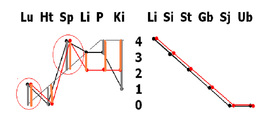
It shows following results
Here is an advanced Pulse Map™ that indicates pulse deepness and pulse force. As we can see on this particular reading patient has repletion in Lung and Spleen-pancreas meridians and quite big deficiency in Kidney meridian with stagnation in Spleen-pancreas and liver meridians. Tae Yin is yin replete, Shao Yang is very yin depleted, Jue Yin is partially yin depleted. Yang meridians and Fu organs are without any pathological changes, that means that dysfunction is localized only in Zang organs and yin meridians. This Pulse Map™ shows us another important reading as involvement of 2 extraordinary meridians Jen Mai and Yin Wei Mai which were used for the first treatment (together with another points directly indicated by Pulse Map™)that relieved abdominal pain and eliminated instantly cigarettes cravings.
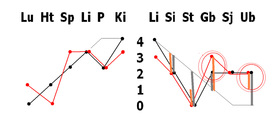
This advanced Pulse Map™ shows following results:
Depletion of Small Intestine and Stomach meridians and repletion of Gall Bladder and Urinary bladder meridians with stagnation in Stomach meridian. We can see that Yang Ming is partially yang depleted, Shao Yang is yang replete and Tae Yang is partially yang replete and partially yand depleted. We can observe that only Fu organs and yang meridians are affected comparing to above mentioned case were just Zhang organs and yin meridians were affected. This Pulse Map™ also shows that Yang Qiao Mai and Du Mai extraordinary meridians are involved. Opening of these particular meridians during first treatment (together with another points directly indicated by Pulse Map™) significantly relieved pain straight during the first treatment and patient advised that she felt much better when she was leaving the room then when she was entering.
Day One
1 Introduction into the Pulse Map™ method according Huangdi Bashiyi Nanjing (黃帝八十一難經) Acupuncture Pulse Diagnosis and pulse reading interpretations
Day Two
1 Practical use of Pulse Map™ method according Huangdi Bashiyi Nanjing (黃帝八十一難經) Acupuncture Pulse Diagnosis and treatment regarding pulse reading
Practitioners need this time to become familiar with pulse diagnostic methods, so they can easy apply pulse reading for treatment procedures that we discuss on the second day.
If you wish to come for this course but have not time for a week brake, please advise me, so we can organize two days together seminar without interruption

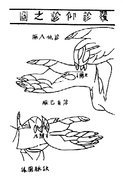
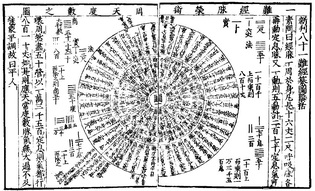
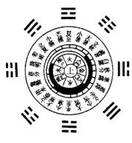
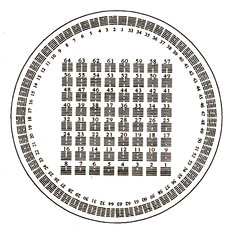
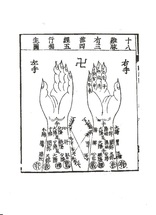
 RSS Feed
RSS Feed
